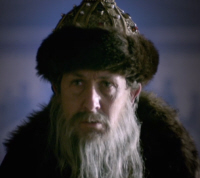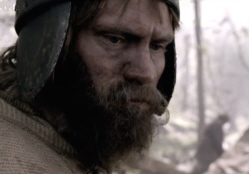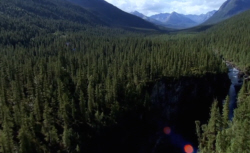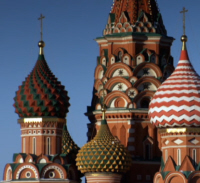Russian Resource - Ivan the Terrible - Siberia
New world crops, like potato, maize and tomatoes, have given billions of people all over the planet a cheap and hardy source of nourishment for centuries. They’ve made a greater contribution to the world’s prosperity than all the gold and all the silver that was ever ripped out of Peru.
Natural resources would be more important than gold in transforming the world’s economy. Perhaps the most dramatic example of this is Russia. In 1570, it was an impoverished outpost on the edge of Europe. Today, Russia is by far the biggest country in the world. Most of that is Siberia, the vast stretch of forests and mountains once known as “Sib Ir” - “the sleeping land”.

The man who woke up Siberia was the man who made modern Russia. Ivan Grozny. Ivan the Terrible. Tsar Ivan faced a dilemma. How could he make his country an important power on the European stage when it only had basic agriculture and a few natural resources.
The answer was hidden in the forests. Fur. From the 1550s onwards, temperatures around the world began to drop dramatically. We call this the Little Ice Age. It’s a time when the Thames started to freeze hard, when Iceland was cut off from the rest of the world from time to time by sea ice, there were huge snowfalls in Spain and Portugal.
And before modern fabrics, wearing fur was one of the few ways you could stay warm. And the richer you were, the better the quality of the fur you could afford.
Ivan turned to private enterprise. He called in a family of trading tycoons, the Stroganovs. Ivan gave them a charter to exploit the forests north and east of Moscow. The Stroganovs then hired some “private contractors”. Mercenaries, led by a Cossack called Yermak.
Kuchum Khan

The fastest way for Yermak to get fur was simply to take it from the native hunters. Yermak pushed further east, into lands ruled by Kuchum, the Khan of Sibir. A direct descendant of Genghis Khan. Most of his men still carried bows and arrows, spears and swords. Yermak’s men had modern muskets. Some of Kuchum’s men had never seen a gun before. One of them described their horror. “There’s a flash of fire… a great smoke and thunder. It’s impossible to shield yourself from them.”
Guns gave the Europeans victory as surely as they had in South America. But the Khan of Sibir escaped into the forest. Yermak claimed the land for Russia… and sent a tribute to Ivan the Terrible - 5,200 of the finest Siberian furs.

When Ivan the Terrible saw these furs he must have realised that everything had changed. All the furry animals near Moscow were long gone. But Siberia offered a bonanza of fur. A black fox fur, for instance, was worth more than its weight in gold, and Siberia’s furs were limitless. Limitless trading wealth… meant limitless power.
To thank Yermak, Ivan made him a gift of a suit of armour and dubbed him the Prince of Siberia.

Yermak pushed deeper into the wilderness for two more years. By then, the Russians were exhausted and out of food. On the night of August the 5th, 1584, Yermak made camp by the Irtysh River. But Kuchum Khan had been tracking the Russians every step of the way. It’s said Yermak ran into the river to escape. But his armour weighed him down. Yermak was drowned by Ivan’s gift to him.
Kuchum’s victory would be short-lived. An unstoppable flood of Russian settlers and raiders would follow Yermak into Siberia. It took the Russians only 60 years to push 4, 000 miles across Asia, all the way to the Pacific Ocean. Siberia was now Russian.
It’s impossible to imagine modern Russia without Siberia. It would be just another eastern European country. And as for the wealth, 80% of Russia’s gas and coal and 90% of its oil reserves are found in Siberia - the basis of its modern power.
